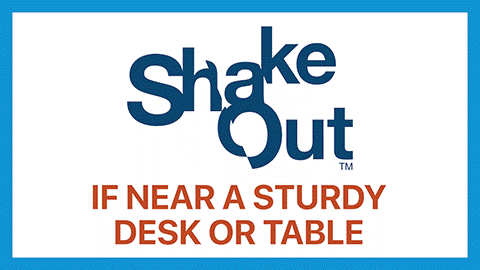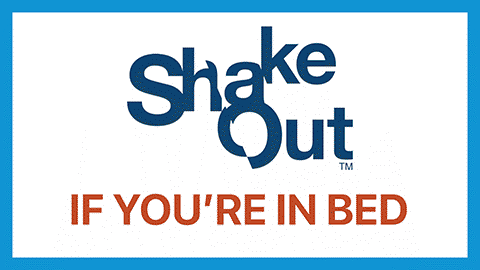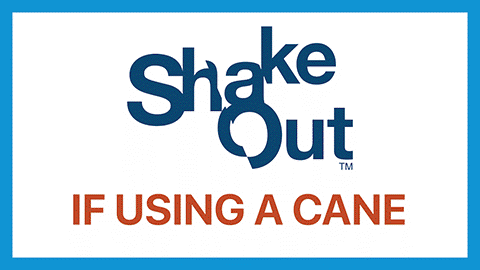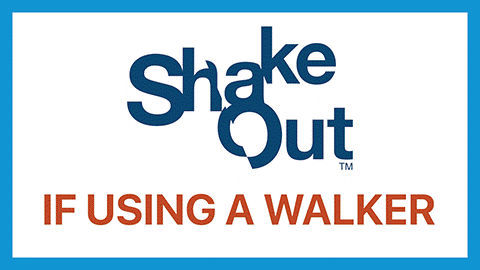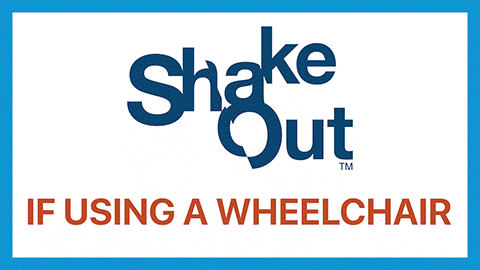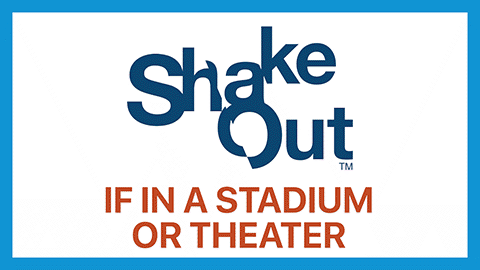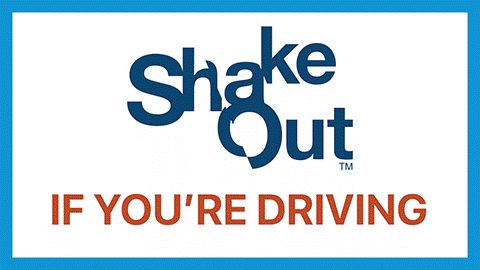Drop, Cover, and Hold On or other recommended actions such as Lock (wheels), Cover, and Hold On – if you feel shaking or get an alert.
Your past experience in earthquakes may give you a false sense of safety; perhaps you did nothing, ran outside, or stood in a doorway, and you survived with no injuries. Or perhaps you got under your desk, and others thought you overreacted.
Yet you may never have experienced the kind of strong shaking that is possible in much larger earthquakes: sudden and intense back and forth motions of several feet per second will cause the floor or the ground to jerk sideways out from under you, and every unsecured object around you could topple, fall, or become airborne, potentially causing serious injury.
This is why you must learn the expert guidance for how to immediately protect yourself after the first jolt… or get an alert that shaking is on its way! Federal, State, and local emergency management experts and other official preparedness organizations agree that the actions described below will reduce injury and death during earthquakes.
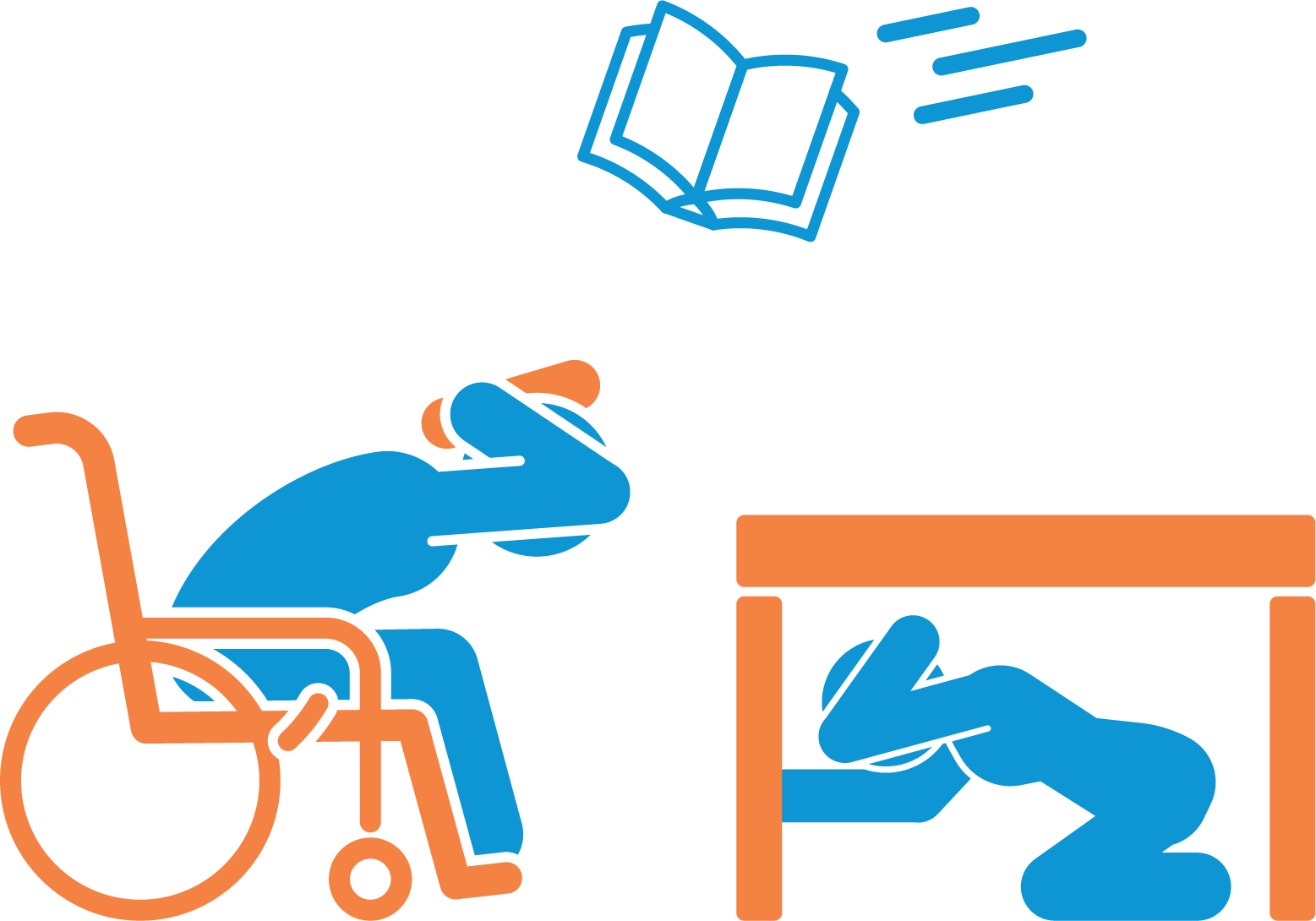
ECA’s Step 5 Webinar reviews Drop, Cover, and Hold On!
(Click “CC” for captions)
Learn about our Safer At Home Webinar Series
In most situations, if you feel shaking or get an earthquake alert, immediately:
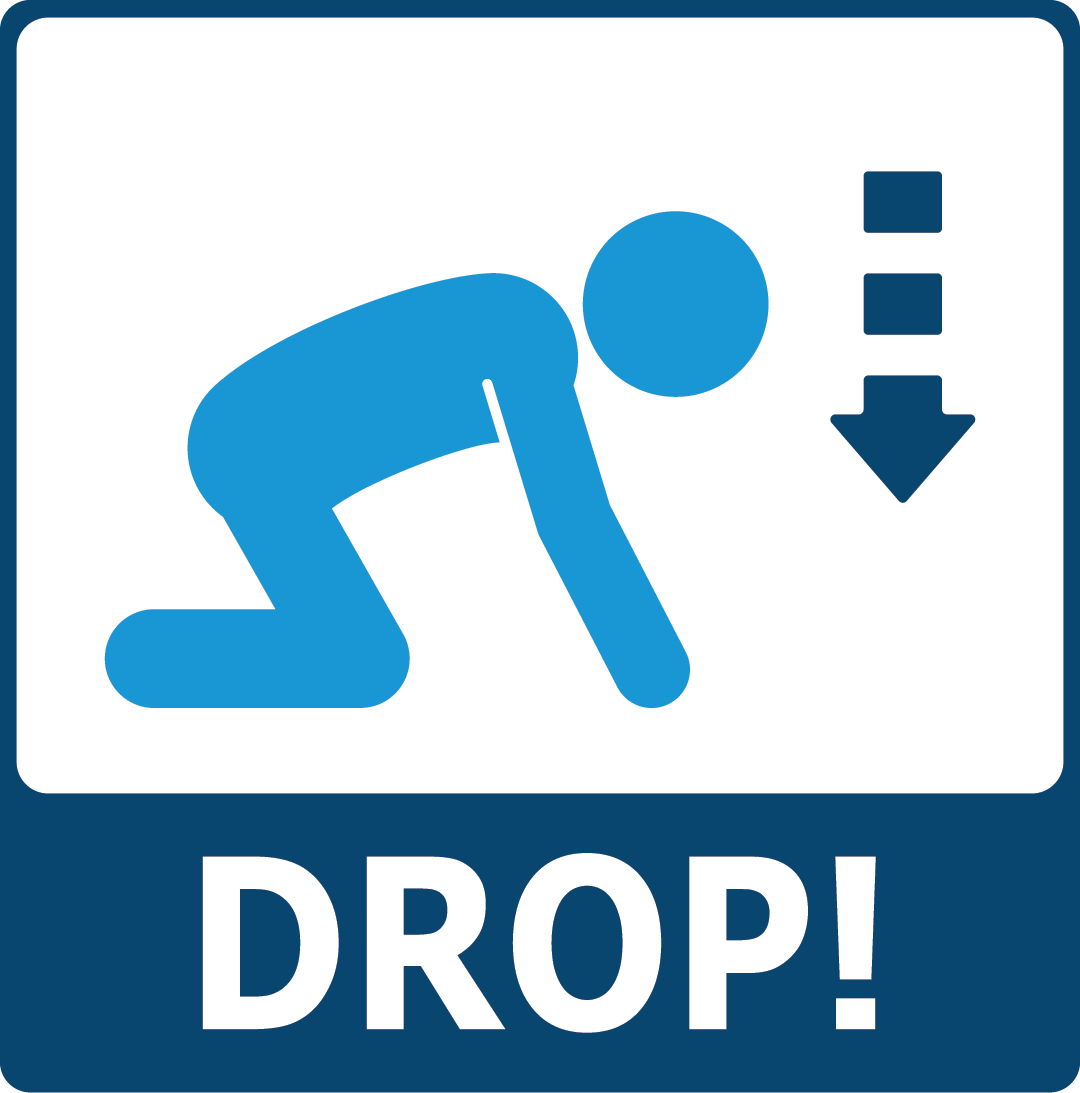
DROP where you are, onto your hands and knees. This position protects you from being knocked down and reduces your chances of being hit by falling or flying objects.
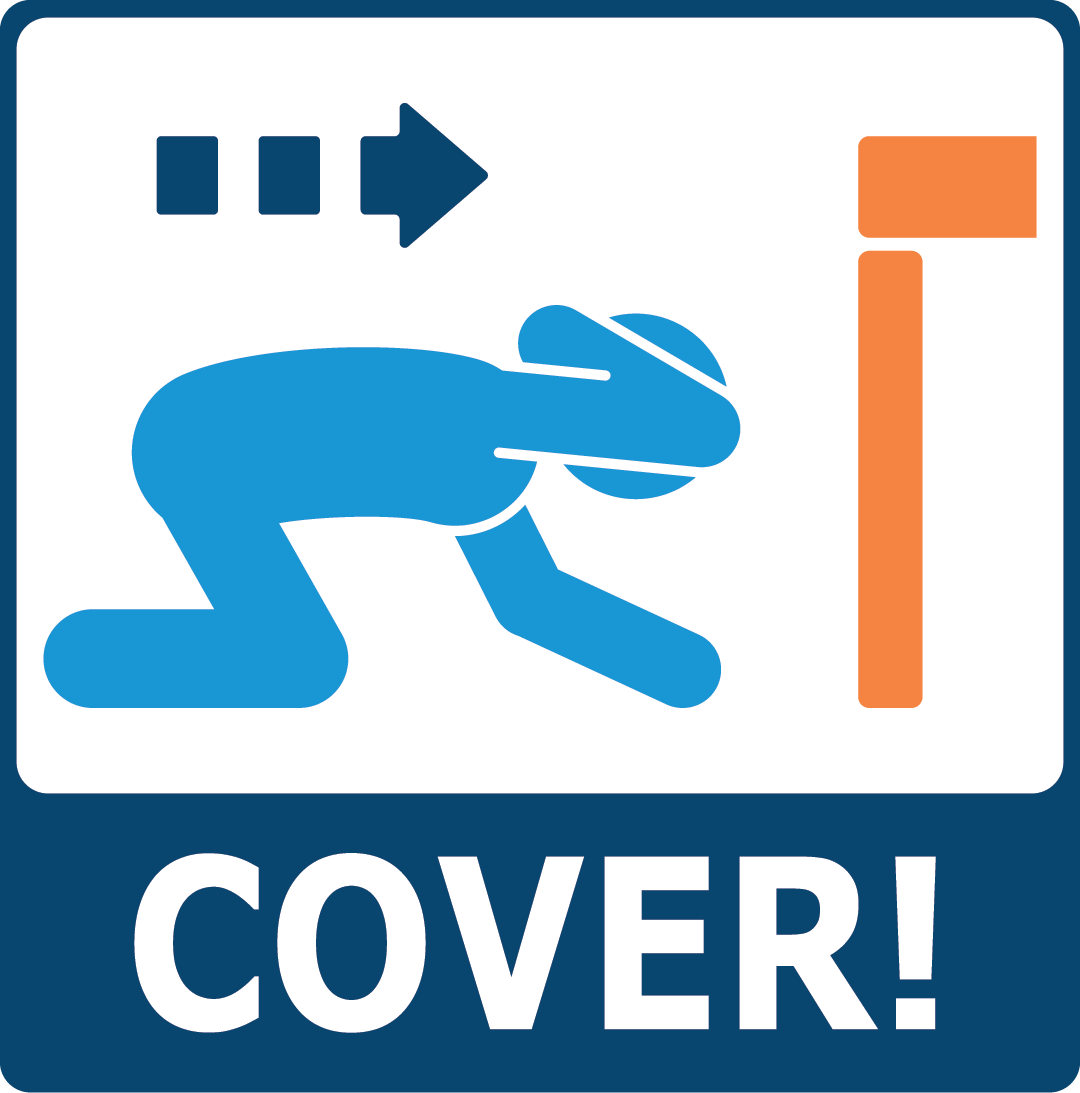
COVER your head and neck with one arm and hand.
- If a sturdy table or desk is nearby, crawl underneath for shelter.
- If no shelter is nearby, crawl next to an interior wall.
- Stay on your knees; bend over to protect vital organs.
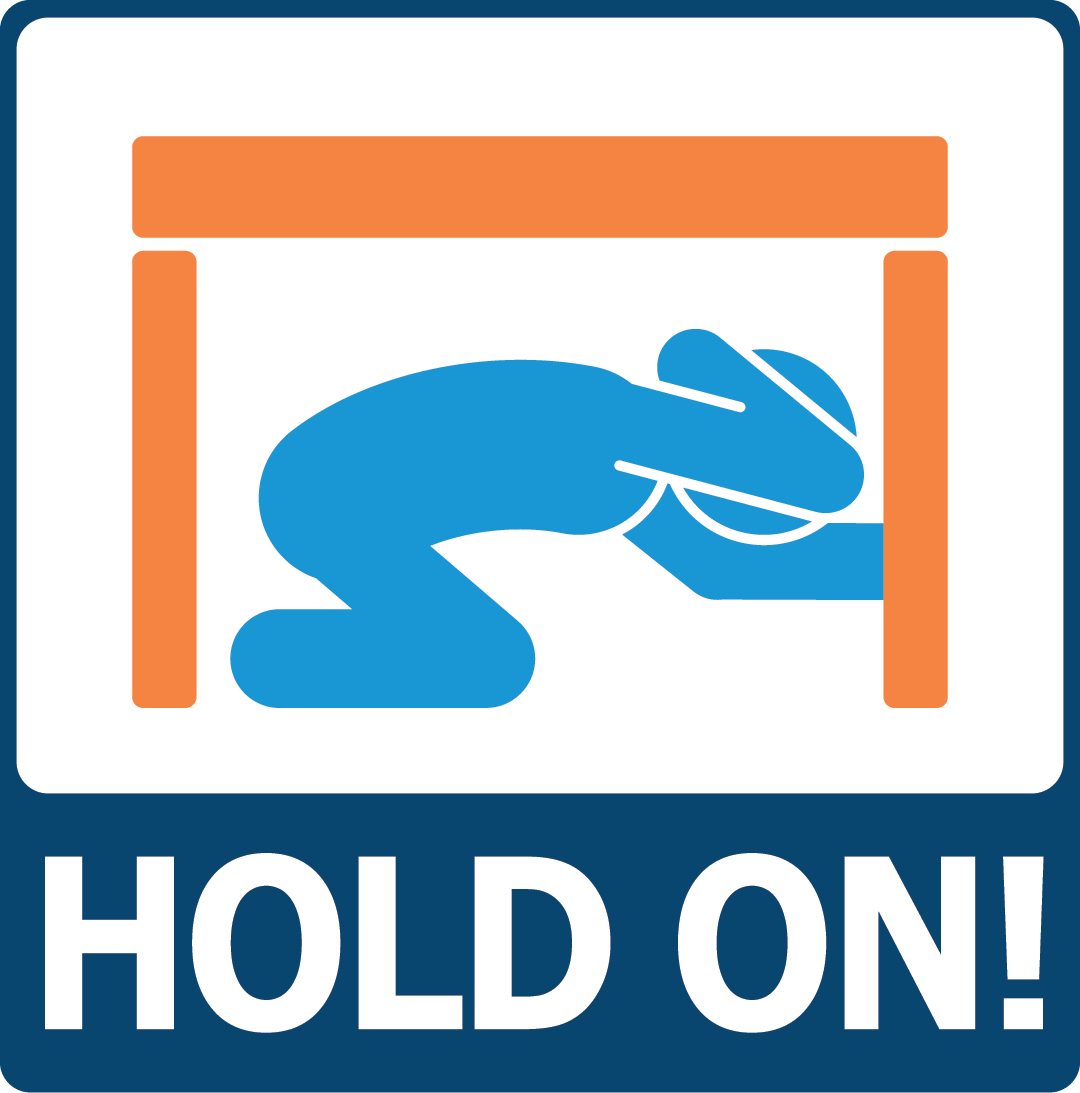
HOLD ON until the shaking stops.
- Under shelter: hold on to it with one hand; be ready to move with your shelter if it shifts
- No shelter: hold on to your head and neck with both arms and hands.
Or adapt to your situation. If you have difficulty getting onto the ground, or cannot get back up again without help, then follow these recommendations:
If you use a cane: DROP, COVER, and HOLD ON or sit on a chair, bed, etc. and cover your head and neck with both hands. Keep your cane near you so it can be used when the shaking stops.

If you use a walker or wheelchair: LOCK your wheels (if applicable). If using a walker carefully get as low as possible. Bend over and COVER your head/neck with your arms, a book, or a pillow. Then HOLD ON until the shaking stops.


For other accessibility recommendations see EarthquakeCountry.org/accessibility.
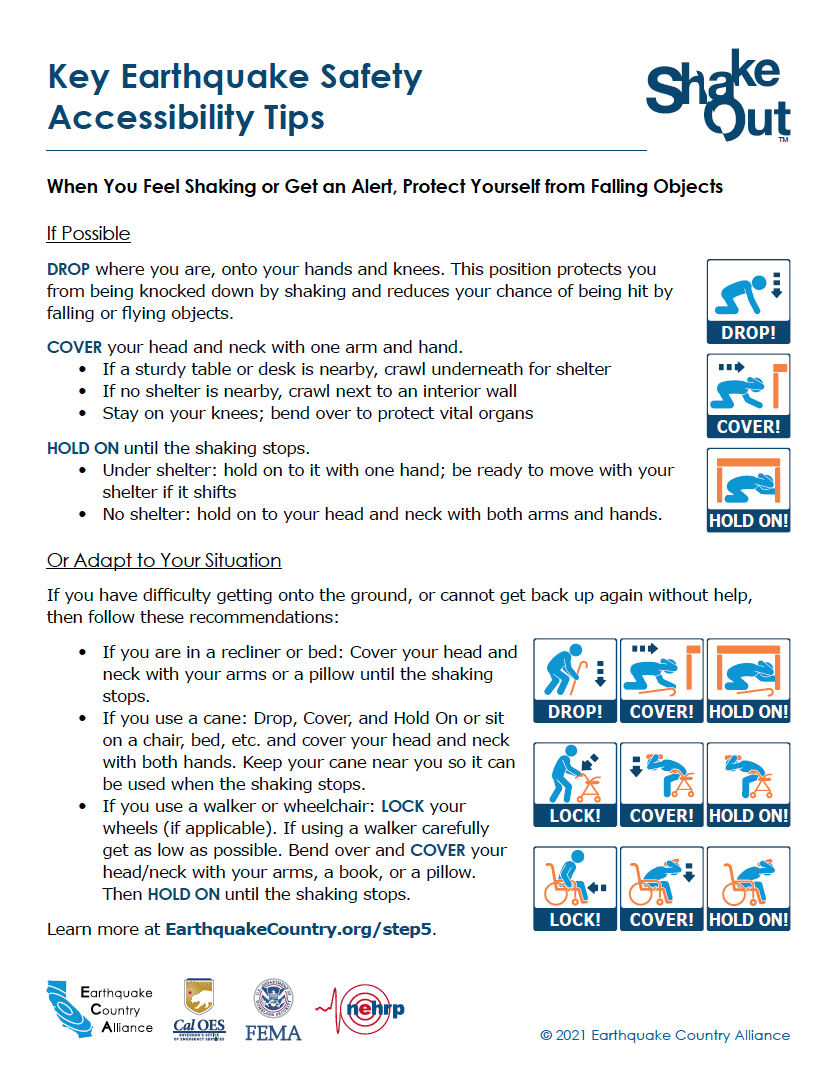
All of this information and more can be found in our Key Earthquake Safety Accessibility Tips PDF, also available in Other Languages.
Taking the proper actions described in this page, above and below, can save lives and reduce the risk of injury. Everyone, everywhere, should learn and practice what to do during an earthquake, whether at home, work, school, or traveling.
Our special report explains why official rescue teams, emergency preparedness experts, and others recommend “Drop, Cover, and Hold On” as the best way, in most situations, to protect yourself during earthquake shaking.
The report also describes why running outside, standing in a doorway, or the “triangle of life” are dangerous or out-dated recommendations.
 |
Download the official Drop, Cover, and Hold On graphic and many other useful images |
How to Protect Yourself in Various Settings
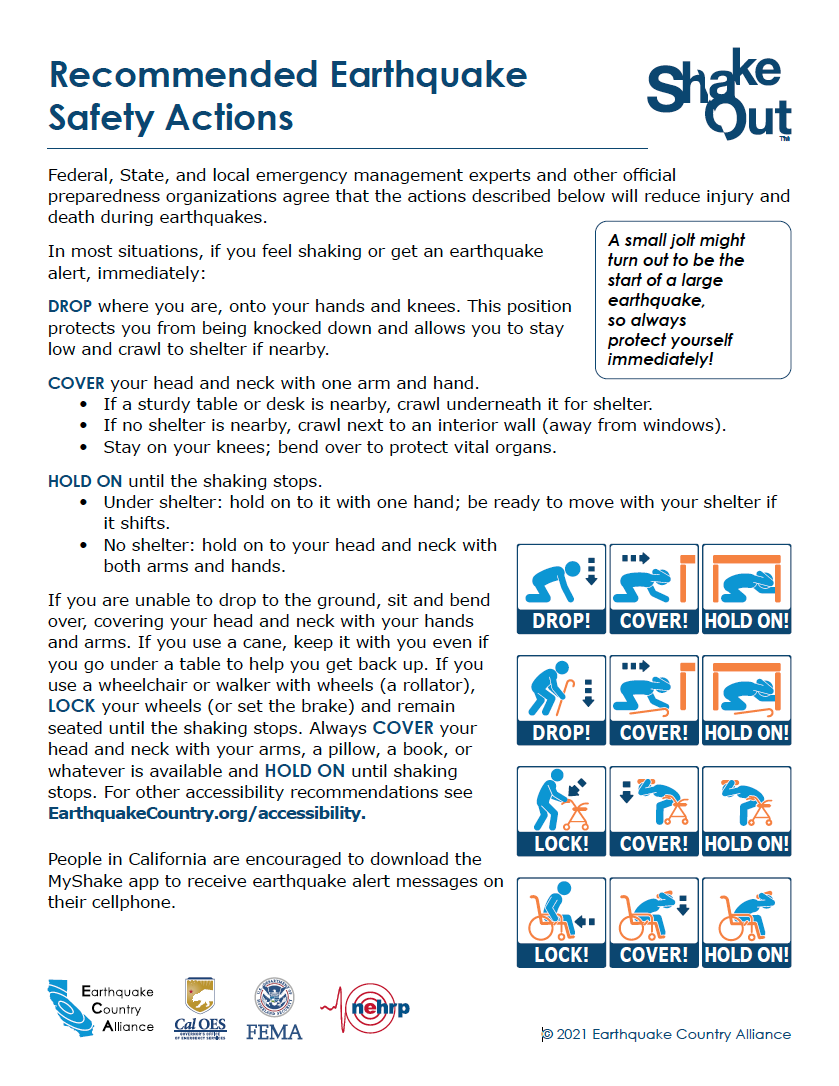
For an overview of the following information, download our Recommended Earthquake Safety Actions PDF, also available in multiple languages.
Clicking the images to the right will take you a full video for each safety action. To download and share these GIFs go to ShakeOut.org/messaging.
Indoors: Drop, Cover, and Hold On. Avoid exterior walls, windows, hanging objects, tall furniture, televisions, and cabinets with heavy objects or glass. Do not try to move more than 5-7 feet before getting on the ground. Do not go outside during shaking! (Exterior building materials and glass can fall and may hit you as you exit.) If seated and unable to drop to the floor: bend forward, Cover your head with your arms, and Hold On to your neck with both hands.
In bed: Do not get out of bed. Lie face down to protect vital organs, and Cover your head and neck with a pillow, keeping your arms as close to your head as possible, while you Hold On to your head and neck with both hands until shaking stops. You are less likely to be injured by fallen and broken objects by staying where you are.
In a multiple-floor building: Drop, Cover, and Hold On. Avoid windows and other hazards. Do not use elevators. Do not be surprised if sprinkler systems or fire alarms activate.
In a classroom: Drop, Cover, and Hold On. Laboratories or other settings may require special considerations to ensure safety. Students should also be taught what to do at home or other locations.
In a stadium or theater: Drop to the ground in front of your seat or lean over as much as possible, then Cover your head with your arms (as best as possible), and Hold On to your neck with both hands until shaking stops. Then walk out slowly, watching for anything that could fall during aftershocks.
In a store: Drop, Cover, and Hold On. Getting next to a shopping cart, beneath clothing racks, or onto the bottom shelf of a large multi-shelf unit to provide extra protection from falling objects.
Outdoors: Move to an open space if you can safely do so; avoid power lines, trees, signs, buildings, vehicles, and other hazards. Then Drop, Cover, and Hold On. This protects you from any objects that may be thrown through the air, even if nothing is directly above you.
Driving: Pull over to the side of the road, stop, and set the parking brake. Avoid overpasses, bridges, power lines, signs, trees and other hazards. Stay inside the vehicle until the shaking stops, then proceed carefully by avoiding fallen debris, cracked or shifted pavement, and emergency vehicles. If a power line falls on the car, stay inside until a trained person removes the wire.
Near the shoreline: Follow instructions for your setting described above. Then as soon as shaking reduces enough that you are able to stand, walk quickly to high ground or inland as a tsunami may arrive within minutes. Don’t wait for officials to issue a warning. Walk, rather than drive, to avoid traffic, debris, and other hazards.
Below a dam or reservoir (water storage facility): Follow instructions for your setting described above. Large water storage structures can become damaged during a major earthquake. Catastrophic failure causing a large amount of water to be released and flow downhill is unlikely, but if you live downstream from a dam, you should know flood-zone information and have prepared an evacuation plan for getting to high ground.
People in California are encouraged to download the MyShake app to receive earthquake alert messages on their cellphone.
Many people still think “getting in a doorway” is safe, however this is out-of-date advice that should never have been recommended. We now understand that doorways: are not stronger than any other part of the house; do not provide protection from falling or flying objects; and will not be a safe space in the rare case of building collapse.
Additional Resources
Earthquake Safety Video Series: Simple videos demonstrating what to do to protect yourself in various situations (near a table, no table nearby, in a theater/auditorium, at the shore, and more to come).
EarthquakeCountry.org/accessibility (includes additional guidance for accessibility accommodations before, during, and after earthquakes)
Your Action Plan for the Seven Steps to Earthquake Safety (8-page booklet) (PDF | Other Languages)
Earthquake Safety Actions for Parents and Childcare Providers (PDF | Other Languages)
Practice Makes Perfect!
Thoroughly review this information, consider what to do in your home or workplace, and practice. It is through practicing Drop, Cover, and Hold On that we build “muscle memory” to help us respond correctly when the shaking starts. An excellent way to practice how to survive an earthquake is to participate in Great ShakeOut Earthquake Drills when you can rehearse quake-safe actions with millions of others. It takes 1 minute to practice and is free! Learn more at www.ShakeOut.org.
